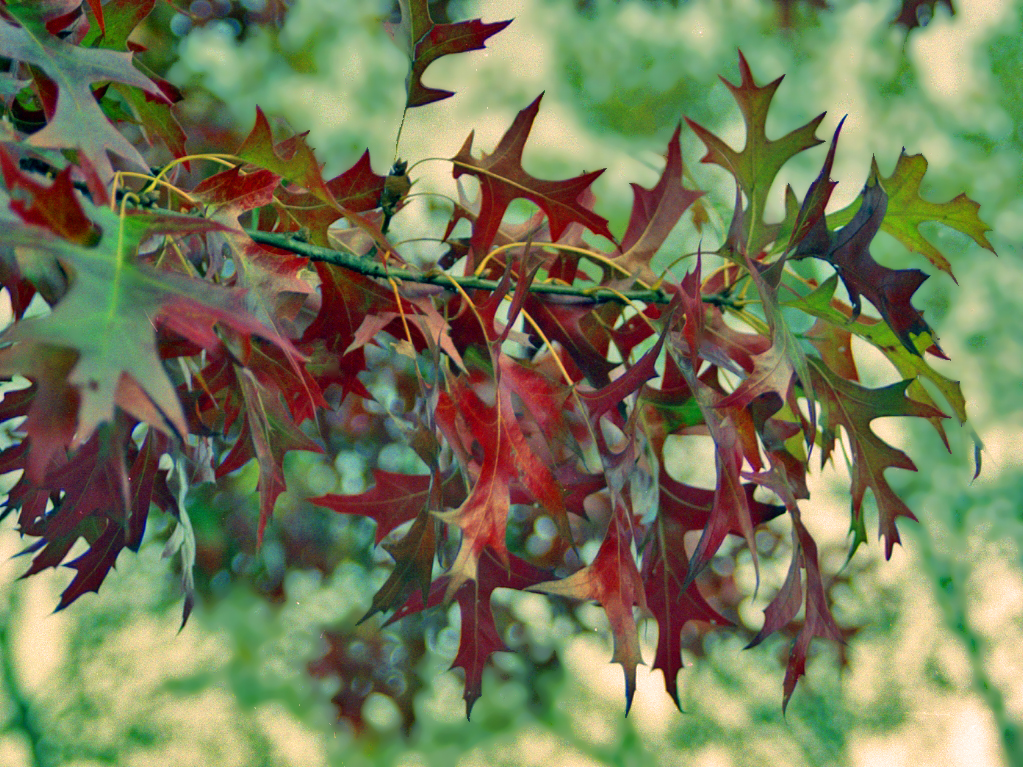
In Raleigh, the City of Oaks, trees are a ubiquitous part of the landscape. They’re everywhere.
Stately oaks line historic streets, cooling them from the summer sun. Come fall, robust maples burst with color in front yards.
But if you’re looking to add your own contribution to the city’s treescape, a native tree is the way to go. They require less work, stop the spread of invasive non-native species and provide food and shelter to the city’s wildlife.
Many native trees are starting to become popular in the Raleigh’s quickly growing residential neighborhoods thanks to their smaller, narrower stature, says Ron Banks, sales manager at Taylor’s Nursery in Raleigh.
“Just think of the real estate term: location, location, location,” he says. “People are wanting something with a footprint that doesn’t impede on their friendly relationship with their neighbor.”
Why Go Native?
First, why should a homeowner choose native trees? In short, because they’re better. Native plants do many things for your neighborhood and its wild inhabitants that exotic species don’t.
As the North Carolina Cooperative Extension service explains, those native trees are doing much more than they appear to. Having a variety of different native trees compounds those benefits.
They will:
- Provide protective cover for local wildlife.
- Grow seeds, nuts, and fruits for squirrels and other mammals.
- Draw in insects that native birds eat, as well as their favorite fruits and seeds.
- Provide nectar for hummingbirds and butterflies.
- Serve as host plants for the larva of butterfly caterpillars, many of which are adapted to the foliage of a single type of plant.
Native plants also help stop the “non-native plant invasion,” as the extension says.
Easy to maintain
They’ll help with your landscaping workload, too, as native trees grow well in and around Raleigh and require less care and upkeep than their non-native counterparts.
The good news is you won’t have to sacrifice any part of your landscape plan to incorporate native trees. That’s because homeowners in the capital area are spoiled for choice when it comes to native trees that thrive in the area. Whether you’re looking for a tree to provide shade in the summer, give local wildlife food or shelter, or just a lovely tree to add a colorful pop to your landscape, you won’t be disappointed.
So here are the eight best native trees for your Raleigh landscape to help you accomplish all of the above.
Oaks (Quercus spp.)
They call Raleigh the City of Oaks for a reason. According to the Wake County Master Gardener program, North Carolina is home to more than 30 native species of oaks.
And thanks to their acorns, leaves and habitat, those trees, in turn, support hundreds of other species of animals.
They also make great shade trees and most are very long-lived. You can’t go wrong with picking an oak for your Raleigh landscape, and some of the most commonly planted include the Willow oak (Quercus phellos), with its long slender leaves, and the Pin oak (Quercus palustris, pictured above), which gives a stunning red color in autumn.
Black Gum (Nyssa sylvatica)
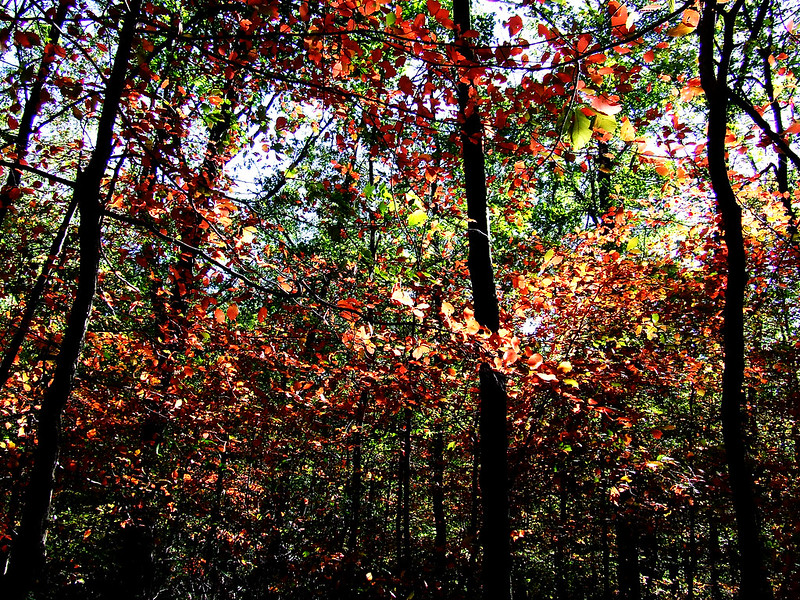
The black gum is a prized native tree around Raleigh, and is even grown as an ornamental thanks to its vibrant fall color.
One cultivar that’s becoming a favorite is the Wildfire Black Gum, Banks says, which rivals the Red Maple with its extraordinary red coloration in autumn.
The trees also are known as polygamodioecious, according to the North Carolina State Extension, which means essentially that some trees have mostly male flowers and others have mostly female flowers.
That’s why some will have just a few berries in the fall, and others will be loaded down with them.
From its flowers, bees also make the highly prized Tupelo honey, and another common name for the tree is Black Tupelo.
Redbud (Cercis canadensis)
These small, colorful trees make great middle/understory layers in home landscapes. They bloom early in spring before the leaves come out and can live 20 years or more.
Redbuds also provide the homeowner with plenty of colorful choices to get the look just right for their landscape plan.
Some of those include the “Royal White,” “Merlot,” “Burgundy Hearts,” “Hearts of Gold,” and “Rising Sun.”
Dogwood (Cornus florida)
The flowering dogwood is a classic landscape tree choice, thanks to its beautiful blooms in spring and excellent leaf color in fall.
They grow between 15 and 30 feet and do best in moist but well-drained soil. Dogwoods too have many different cultivars the homeowner can choose from with varying colors and characteristics.
American Hornbeam (Carpinus caroliniana)
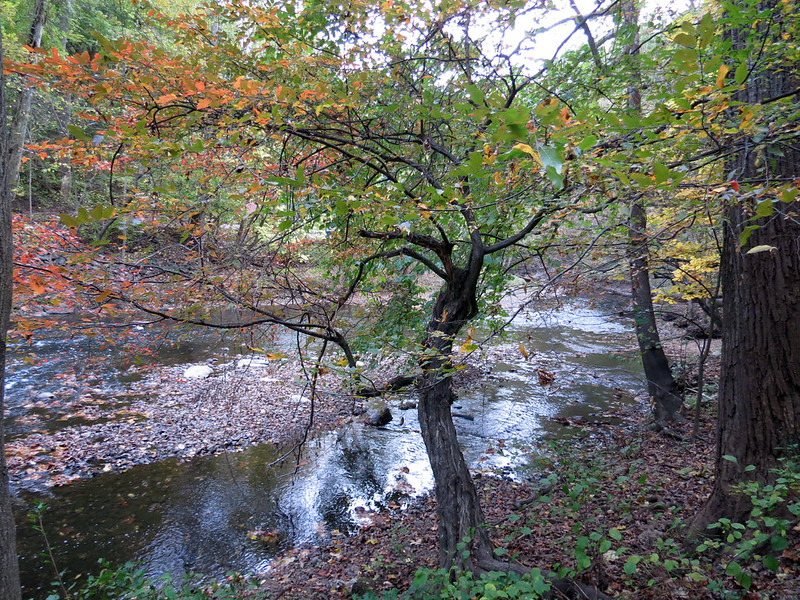
Also known as Musclewood or Ironwood, the American Hornbeam is found naturally around streambanks, riverbanks and maritime forests, says the N.C. State Extension.
They can grow up to 30 feet tall and are known for their pleasing aesthetics and extraordinarily hard wood.
They are becoming really popular as landscape trees as Raleigh continues to grow and home lots get smaller and smaller, says Banks. That’s thanks to their small and narrow stature that help them beautify a landscape and stay within those ever-shrinking home lots.
River Birch (Betula nigra)
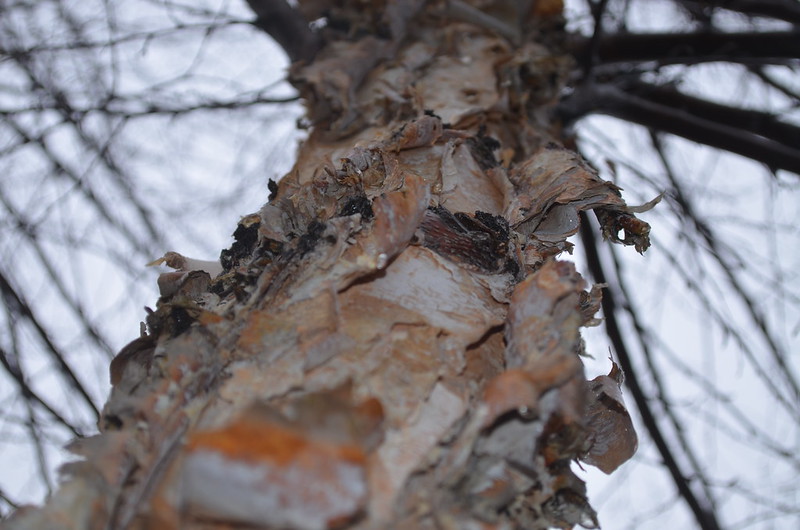
The river birch, which can grow to a towering 80 feet tall, is a favorite native landscape tree thanks to its reddish-brown, papery bark which adds winter interest, graceful branching, heat tolerance and ease in transplanting.
The river birch also produces slim, cylindrical light green flowers in early spring, the extension explains, and as its name suggests, does best in moist, wet soil.
You’ll find them growing naturally found along riverbanks and in floodplains. If you have a well-drained yard, the tree’s leaves may yellow and drop during summer droughts.
Sweet Bay Magnolia (Magnolia grandiflora)
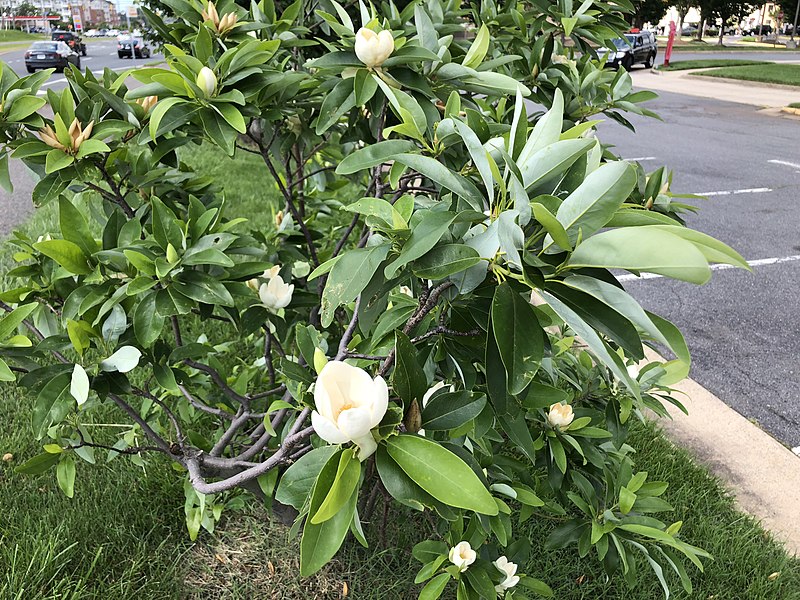
With large, glossy green leaves and spectacular white flowers, magnolias are another common landscape choice.
The smaller cousin of the Southern magnolia, sweet bay magnolias can grow between 20 and 30 feet tall, often with multiple trunks.
The large fragrant white blooms burst out in spring to early summer. They also make a great landscape choice, preferring sun to partly shady conditions, moist or well-drained soil, and are tolerant of floods.
Red maple (Acer rubrum)
If you’re looking for spectacular fall foliage, this is your tree. Usually less than 40 feet tall, the red maple grows faster than some of its counterparts and, according to the N.C. State Extension, makes an excellent lawn, park or street tree.
They’re not only valuable in fall. Come early spring, they’re also one of the first trees to start flowering.
Thanks to that colorful activity in spring and fall and their small stature, they’re a landscape favorite.
Banks cautions though, that the trees are also susceptible to a disease called gloomy scale. The disease normally targets weak or stressed trees. Keep yours healthy and unmolested from the weed whacker and you won’t be disappointed.
Consider talking with a Raleigh landscaping pro to help you with selecting plants or trees for your landscape.
Main image credit: Pin oak, Ettore Balocchi, CC 2.0.